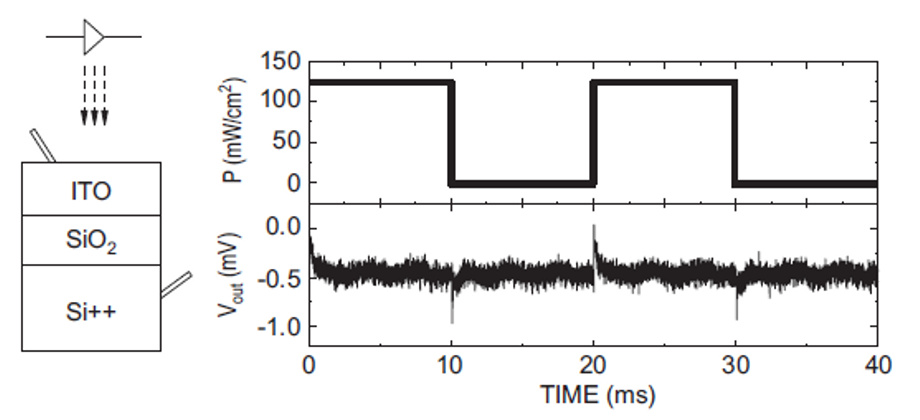This sensor, intended for use in computer vision applications, only produces a signal in response to changes in light conditions.
Background
Inspired by the way retinal cells respond to light, retinomorphic sensors are hoped to enable faster identification of moving objects than software-based approaches. Unlike conventional optical sensors, such as photodiodes, retinomorphic sensors are designed to produce an output signal in response to changes in illumination, but not under constant illumination. Currently, the analysis of visual information occurs almost exclusively in processors, with data provided as a series of conventional images, such as bitmaps. Because of restrictions due to frame rate and processing time, the speed at which moving objects can be identified using conventional cameras is fundamentally limited. Most cameras employ a 2D array of complementary sensors, both utilizing photodiodes to detect light. A photodiode will output a signal (current) that depends on the intensity of light that falls upon it. Unlike photodiodes, animal retinas produce a stronger signal in response to movement, i.e., time-varying visual stimuli, as opposed to static images. This strategy results in a large volume of non-pertinent information being filtered out by the detector/eye, before it reaches the processor/brain. Accordingly, important advances in detector technology may be achieved through novel retinomorphic sensors.
Technology Description
A retinomorphic sensor is demonstrated employing organic semiconductors. The sensor produces an output voltage in response to changes in illumination, but zero output voltage under constant illumination. This device represents a first demonstration of a retinomorphic sensor employing organic semiconductors as the absorber layer. This retinomorphic sensor can exhibit stability under constant measurement conditions up to a period of 1 hour, compared to a few 10's of seconds for previously reported devices based on metal halide perovskites (MHPs). This retinomorphic sensor can also exhibit characteristic decay times which are tunable through a choice of external resistor, demonstrated down to 10 μs, roughly 10,000 times faster than equivalent MHP devices. Such organic retinomorphic sensors have been observed to produce a measurable response even without an input voltage, suggesting they can be implemented as 2 terminal devices, as opposed to 3 terminal devices, as previously thought.
 schematically illustrates a control device with organic semiconductor absorber layer omitted (left), measured with illumination between 0 and P=124 mW/cm2 and a time-dependence of optical power density (P) incident-on a photsensitive capacitor (right) where Vin=0 V and R=100kΩ
schematically illustrates a control device with organic semiconductor absorber layer omitted (left), measured with illumination between 0 and P=124 mW/cm2 and a time-dependence of optical power density (P) incident-on a photsensitive capacitor (right) where Vin=0 V and R=100kΩ
Features & Benefits
- Responsive to movement, reduces signal from static images
- Microsecond response time
- Tunable
- Significantly reduces processing power
Applications
- Computer vision
- Autonomous vehicles
- Image processing
Status
Patent pending US20230132824A1